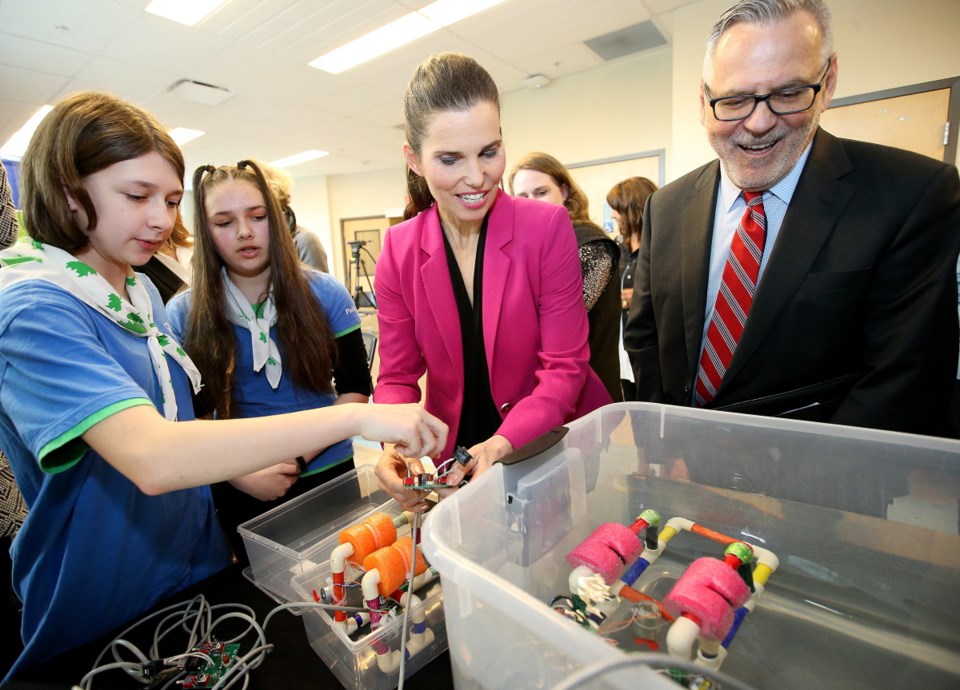UVic researchers got a $335,000 boost to help develop a cheap and easy way to test drinking water for contaminants and acquire a high-tech microscope.
Science Minister Kirsty Duncan was at the University of Victoria on Wednesday to announce $42 million for 186 projects at 37 universities across the country.
The funding was made through the Canada Foundation for Innovation, which supports the development of laboratories and research tools to expand Canadian science.
The announcement follows closely on the heels of the 2018 federal budget, which pledged $4 billion for research.
“It’s actually a pretty simple formula: If you want to do great research, you need great tools,” Duncan told reporters.
“We all want healthy communities, clean air, water, new job opportunities and a prosperous future,” she said. “It all starts with science.”
Two UVic scientists will receive funding boosts to their research with Wednesday’s announcement: Heather Buckley, an assistant professor of civil engineering, will receive $135,000, and cell biologist Leigh Anne Swayne will receive $220,000.
Buckley’s project will develop a portable and inexpensive test costing just a dollar or two to check water for contamination by heavy metals such as arsenic or mercury. The metals can be thrown up by mining operations and contaminate rivers and lakes even after a mine has ceased operations.
An easy and accessible test for water contaminants will empower northern and Indigenous communities to make decisions and speak up on behalf of their own public health, she said.
“Providing a [test result] immediately, rather than waiting weeks to ship samples off from a remote location, will allow immediate cost-saving and life-saving decisions to be made,” Buckley said.
“When communities have information at their own disposal, they can take protective action against immediate health threats and demand their governments continue to do better.”
Swayne’s research will be boosted by an upgrade to her laboratory’s specialized confocal microscope, allowing clearer images of cells at work.
She is especially interested in the function and processing of specific proteins by the neurons in the brain.
Swayne said previous technology has provided scientists with a reasonably good understanding of what’s happening with cells. But the upgrade is like putting on “new glasses” to clear up a fuzzy image.
“This new technology provides us with greater detail and clarity essential for the development of future therapeutic strategies and diagnosis of debilitating brain disorders,” she said.
UVic president Jamie Cassels and Lisa Kalynchuck, associate vice-president research, expressed gratitude for the funding and offered praise for the budget spending.
“The impact it will have on accelerating Canada’s place in the world of new knowledge is truly exciting,” Cassels said.



